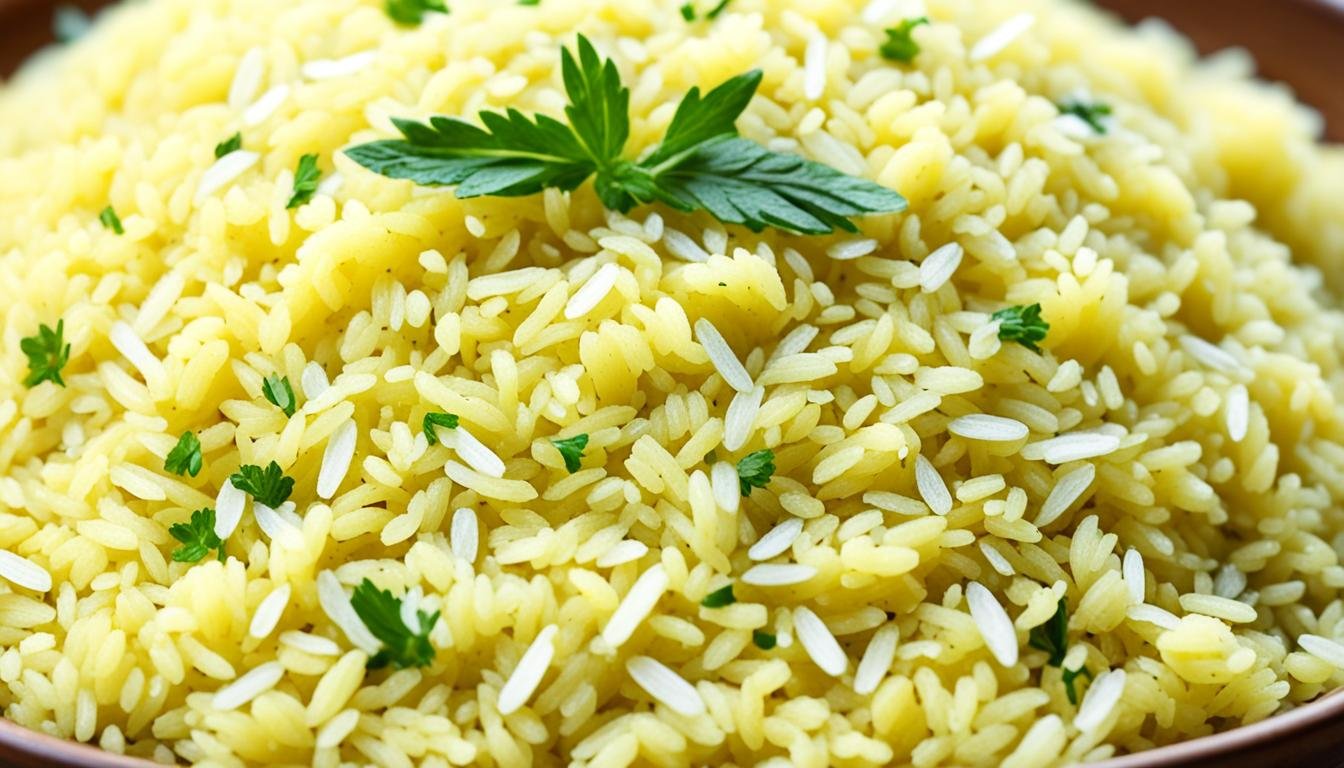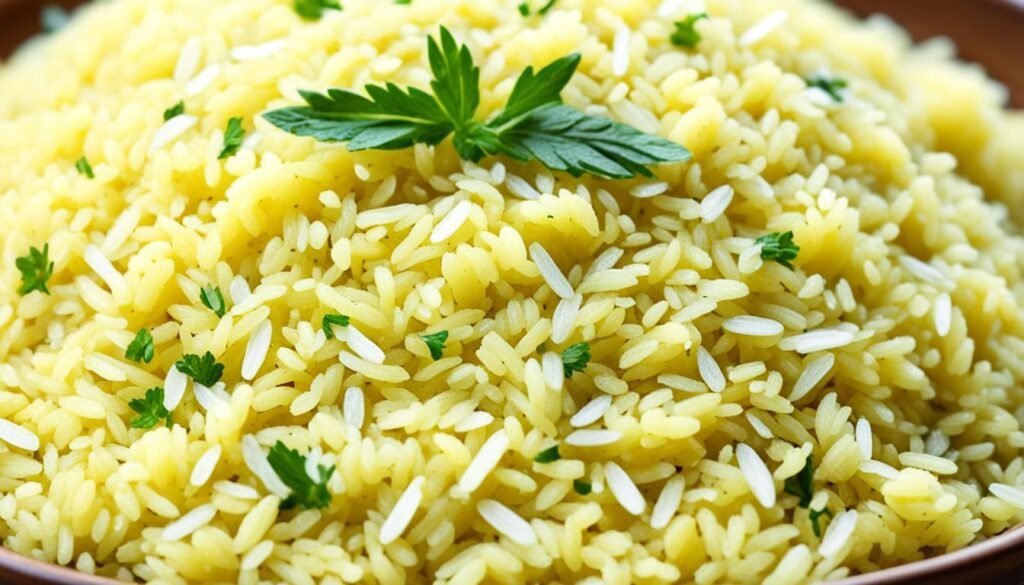Get our FREE E-Book HERE - 120 TIPS for Losing Weight & Bonus Tips for Postpartum Weight Loss & Dad’s Postpartum Experience
Is Yellow Rice Good for Weight Loss?

Imagine this: You’re on a weight loss journey, determined to shed those extra pounds and lead a healthier lifestyle. You diligently follow a balanced diet, incorporating nutrient-rich foods into your meals. But sometimes, you crave a comforting dish that satisfies both your taste buds and your health goals.
This is where yellow rice comes into the picture. Originating from various cultures around the world, yellow rice is a vibrant and flavorful option that adds a pop of color to your plate. But, is Yellow Rice Good for Weight Loss?

Yellow rice, also known as saffron or turmeric rice, gets its sunny hue from the addition of spices like saffron or turmeric. Not only does it look enticing, but it also boasts a range of health benefits that may align with your weight loss journey.
In the next sections, we’ll dive into the nutrition facts of yellow rice and explore its potential health benefits, helping you make an informed decision about whether to include this delightful dish in your weight loss regimen.
Key Takeaways:
- Yellow rice is a flavorful and vibrant dish that can add excitement to your meals.
- It’s important to consider the nutritional content and potential health benefits of yellow rice before incorporating it into your weight loss diet.
- Stay tuned to learn about the specific yellow rice nutrition facts!
Is Yellow Rice Good for Weight Loss: Health Benefits
Yellow rice offers several health benefits due to its nutritional content. It is a good source of complex carbohydrates, which provide sustained energy and help regulate blood sugar levels. The minerals found in yellow rice, such as calcium, iron, magnesium, phosphorus, and potassium, are important for bone health, muscle function, and overall bodily functions.
These minerals play a crucial role in maintaining proper bone density and preventing conditions such as osteoporosis. Additionally, iron is essential for red blood cell production, while magnesium supports enzyme function and nerve signaling.
Another impressive aspect of yellow rice is its high content of B vitamins, including thiamine (B1), riboflavin (B2), niacin (B3), and folate (B9). B vitamins are involved in energy production, nerve and brain function, and the synthesis of DNA and red blood cells.
Moreover, yellow rice is naturally low in fat and cholesterol, making it a heart-healthy option. Its high fiber content promotes digestive health, aids in weight management, and can reduce the risk of chronic diseases such as heart disease, diabetes, and certain types of cancer.
Yellow rice also contains antioxidants, such as curcumin from turmeric, which has anti-inflammatory properties. These antioxidants help protect cells from damage caused by harmful molecules called free radicals and may reduce the risk of chronic diseases.
Incorporating yellow rice into your diet can be a flavorful and nutritious choice. Whether as a side dish or the base of a main meal, yellow rice provides essential nutrients and offers various health benefits.
Conclusion: Incorporating Yellow Rice in a Healthy Diet
Incorporating yellow rice into a healthy diet can be a delicious way to support your weight loss goals and contribute to a healthier lifestyle. Yellow rice is not only visually appealing but also a nutritious addition to your meals. It contains essential carbohydrates, minerals, and vitamins that are vital for overall health and well-being.

When it comes to weight loss, yellow rice can be a great choice. Unlike refined white rice, yellow rice contains complex carbohydrates that provide sustained energy and help you feel fuller for longer. This can prevent overeating and help you maintain a caloric deficit, which is crucial for weight loss.
Additionally, yellow rice is rich in minerals such as calcium, iron, magnesium, phosphorus, and potassium. These minerals play significant roles in various bodily functions, from strengthening bones and muscles to supporting optimal organ function.




